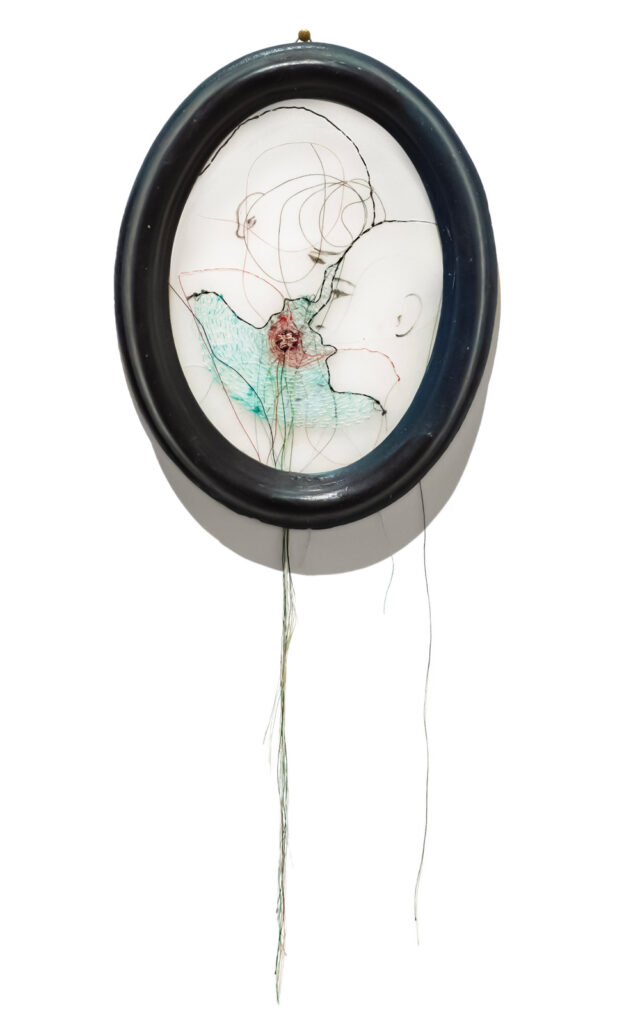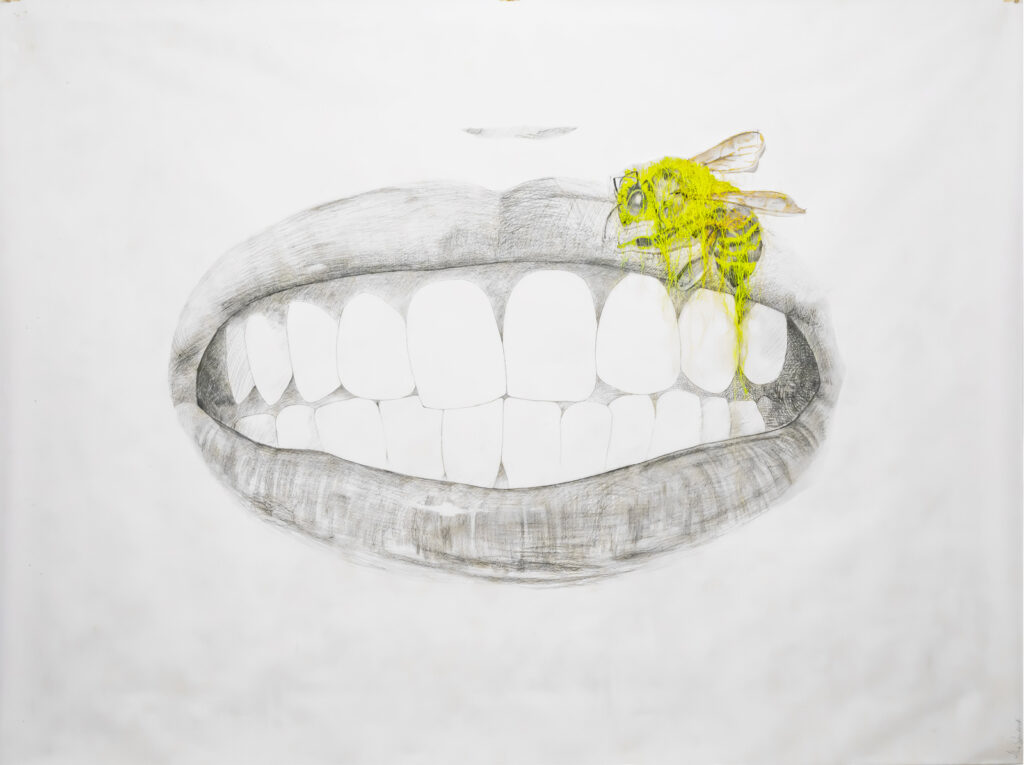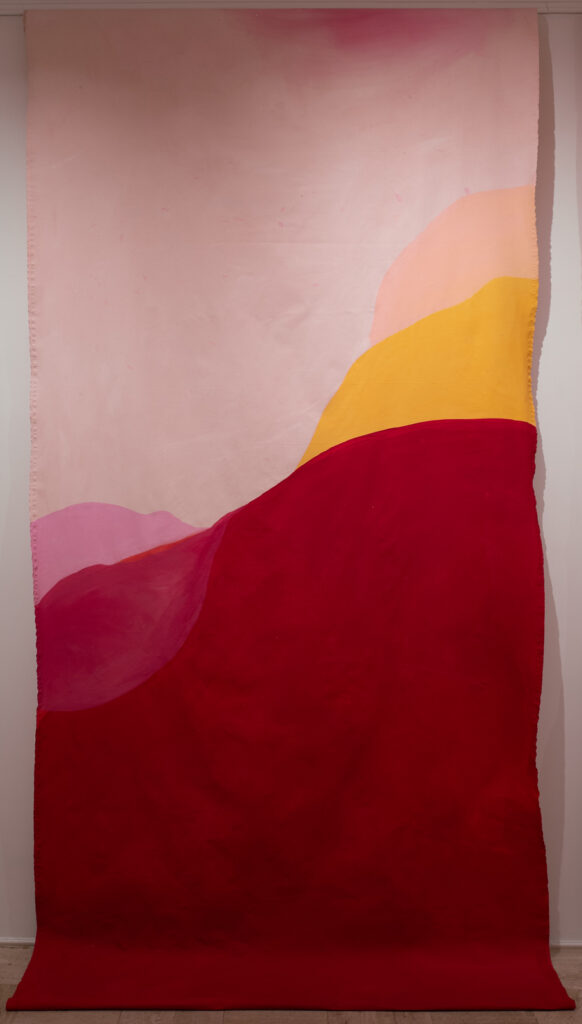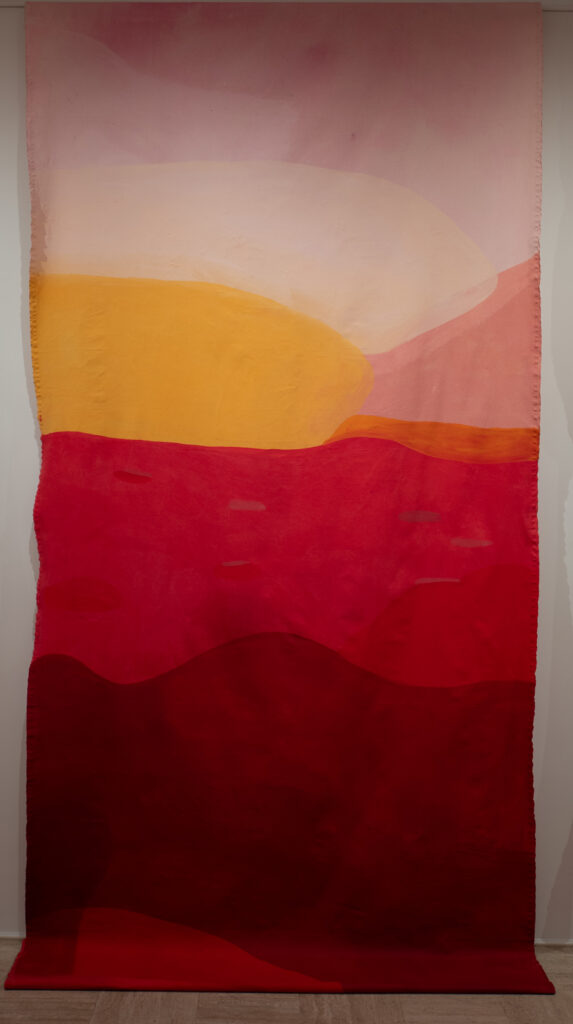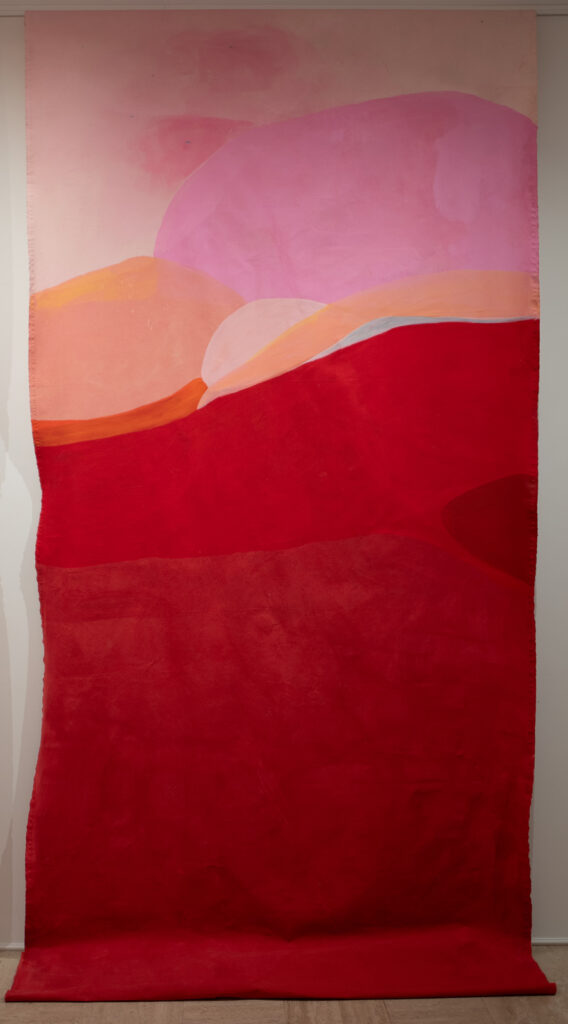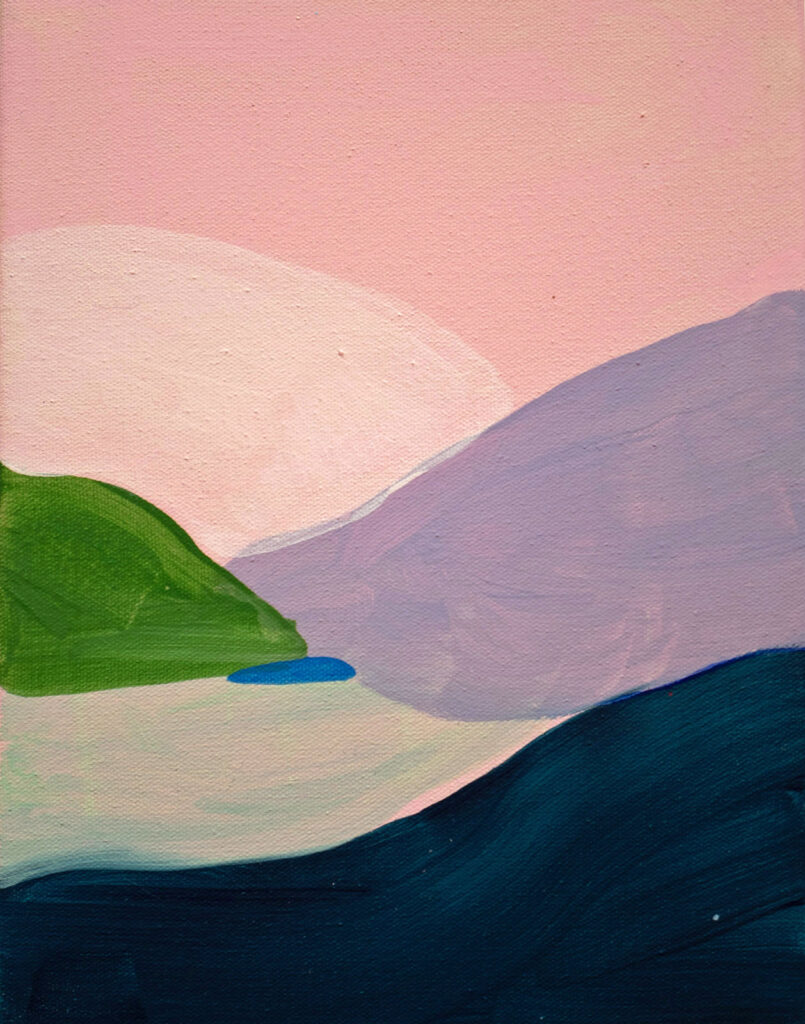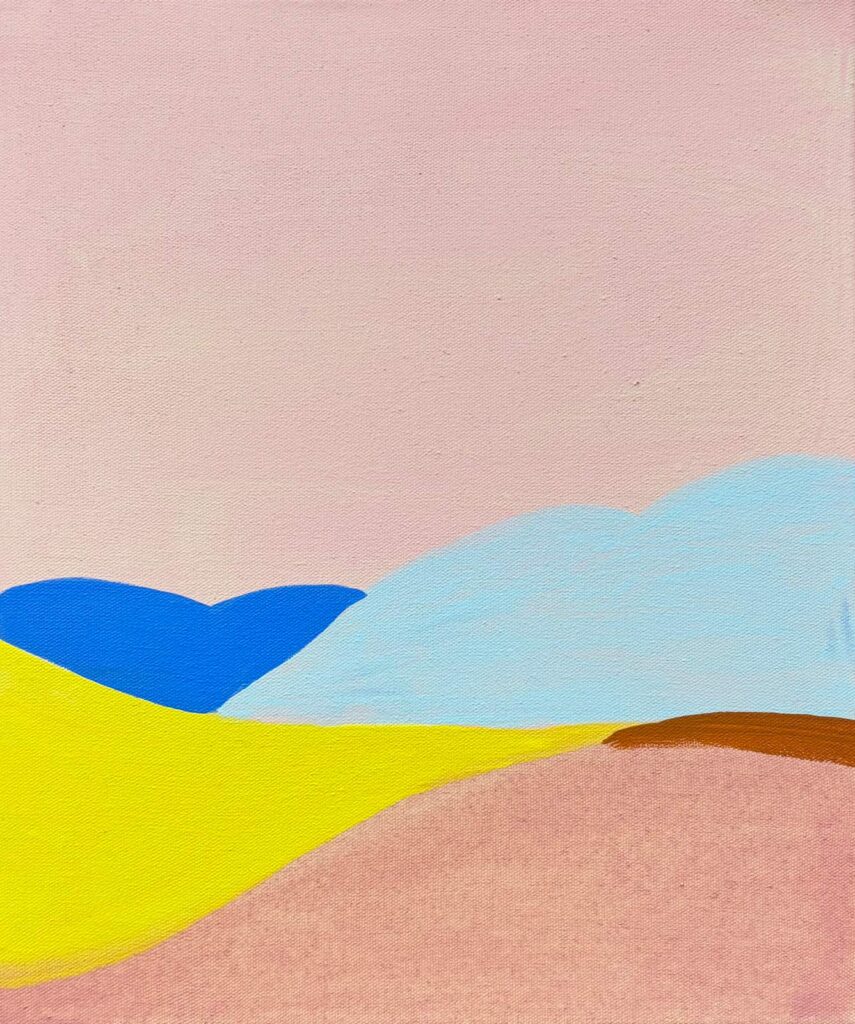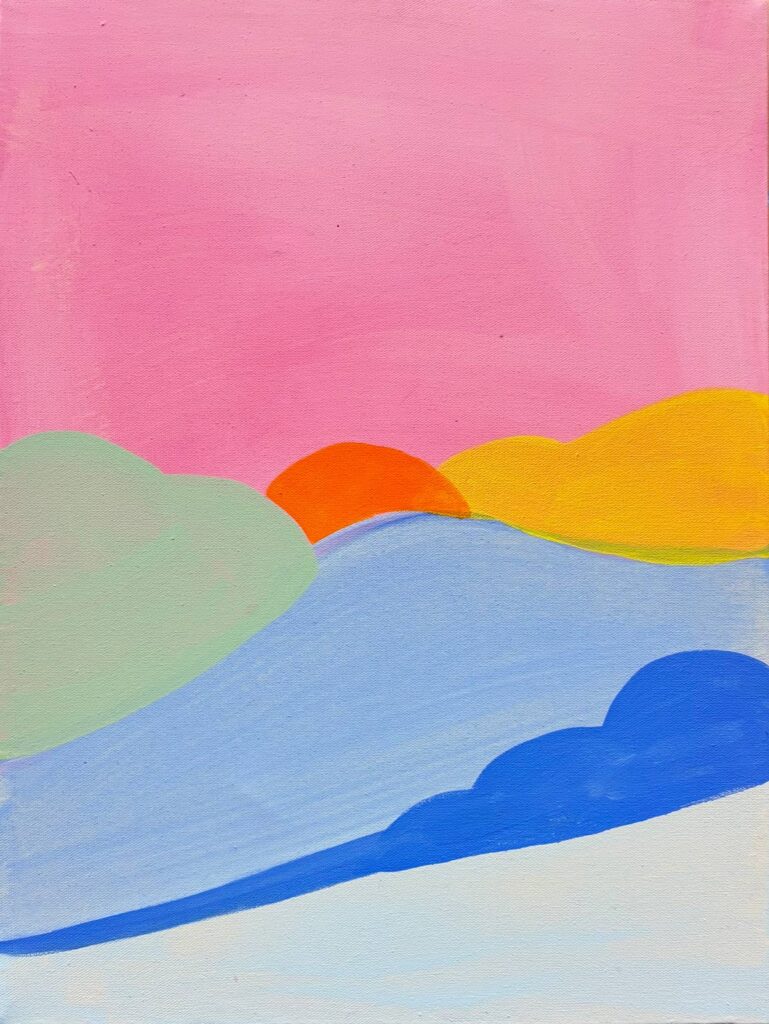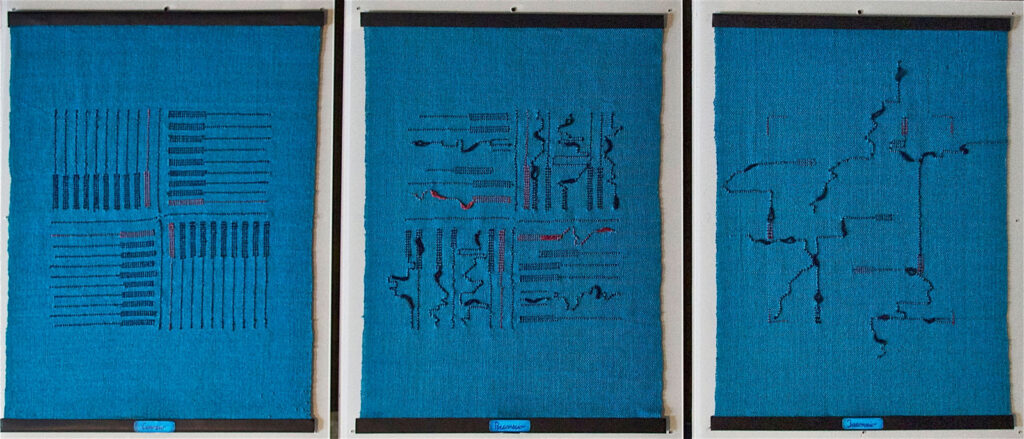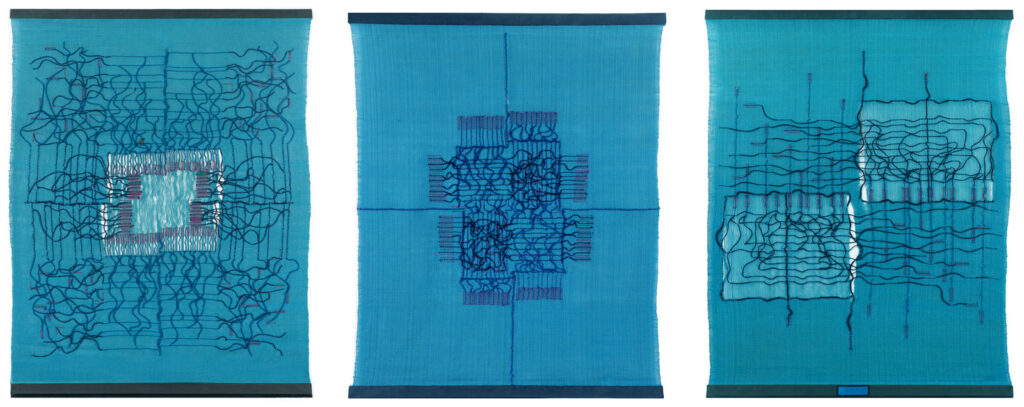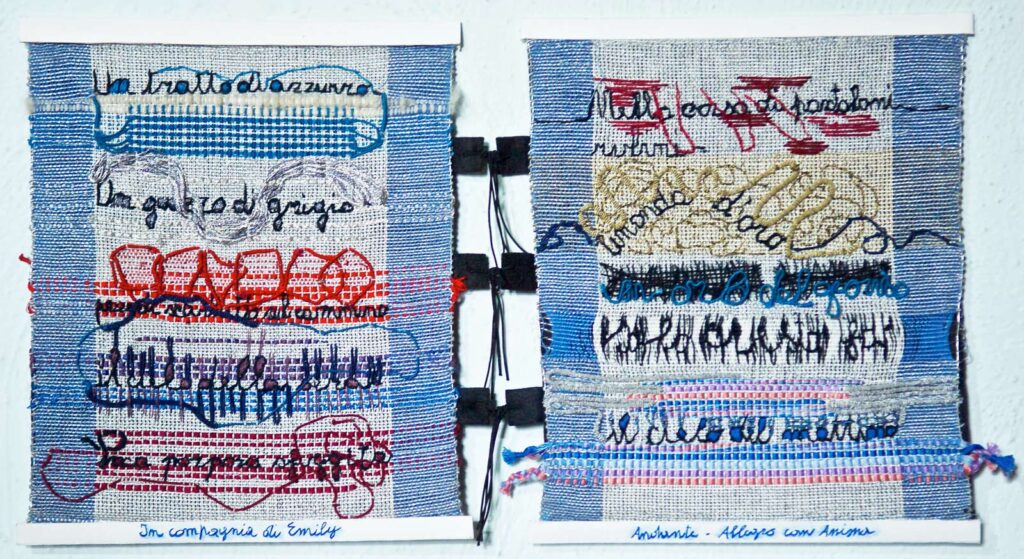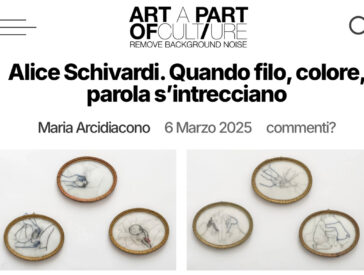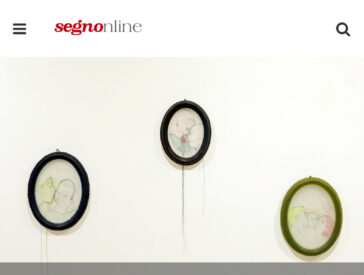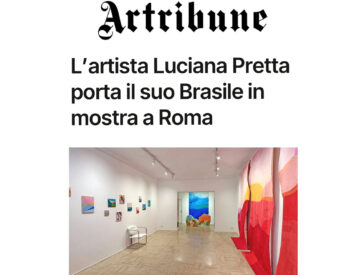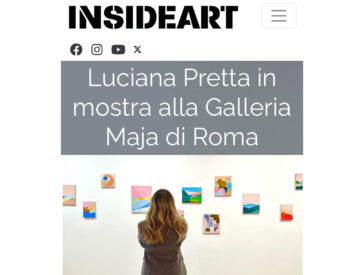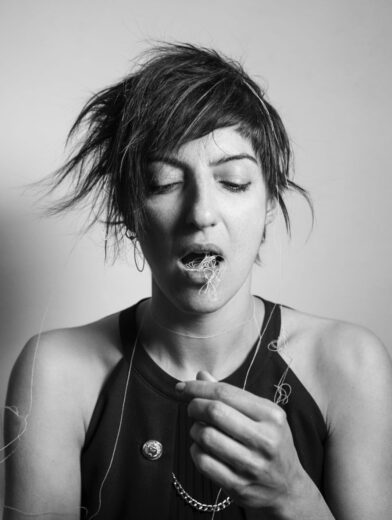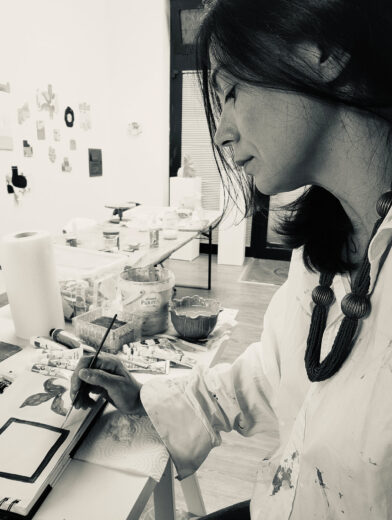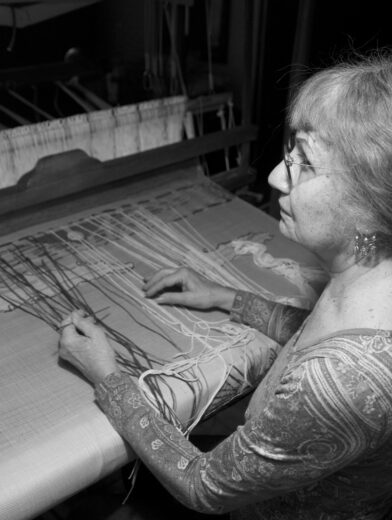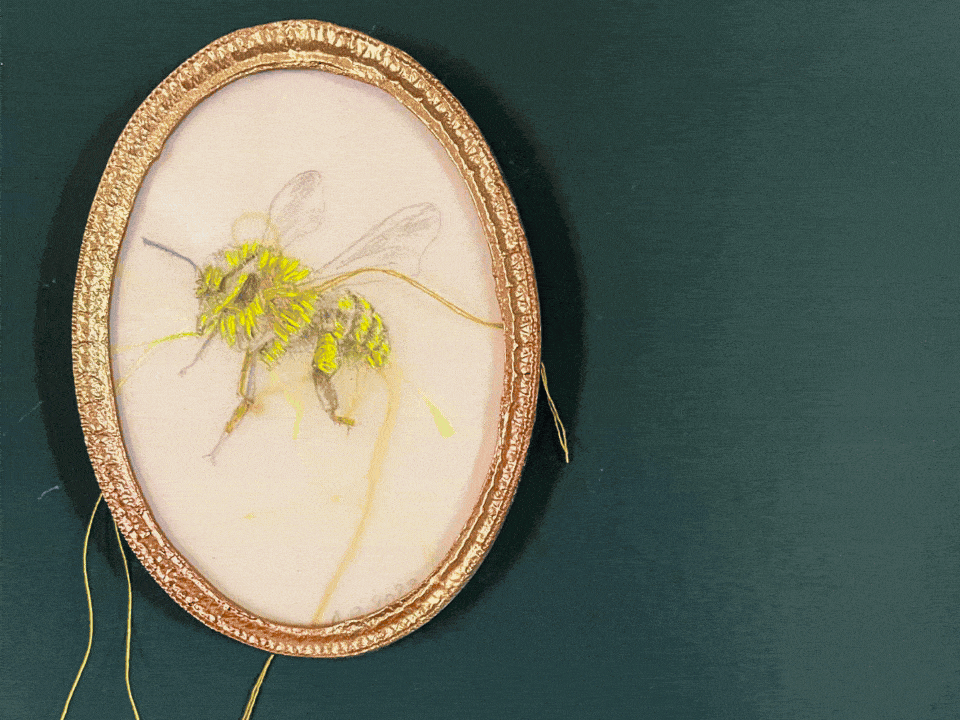
Maja Arte Contemporanea is pleased to present a series of three solo exhibitions curated by
Giovanna Dalla Chiesa. The event brings together the work of three artists—Alice Schivardi,
Luciana Pretta, and Luisa Lanarca—marking their first collaboration with the gallery.
Alice Schivardi > 19 February – 8 March
Luciana Pretta > 12 – 29 March
Luisa Lanarca > 2 – 19 April
According to Giovanna Dalla Chiesa:
“The art of painting, in its richness, has accustomed us to such a layering of elements that the
function of each is often obscured in favor of the network of meanings that sustains the overall
composition. In this exhibition, seemingly designed to highlight the contours of a feminine
constellation, each of the three artists is entrusted with the role of fully supporting one of these
elements against the subtle backdrop of painting: Alice Schivardi takes on the power of thread,
which in her ‘embroidery drawings’ replaces the pencil or pen, tracing figures that float in the air, suspended by transparent supports, marking the aerial and infinite dimension of space, as well as its concentration in small details. Luciana Pretta explores the flow of emotions within expanses of color that slide like a liquid blanket from top to bottom, from sky to earth, simulating the tectonics of a soft, welcoming environment capable of enveloping our space like tapestries. Luisa Lanarca’s task is to intertwine thread, color, and light, invoking poetic language through the art of weaving, transforming it into a call, transcribed according to the style of late 19th-century signs and affiches.
The ‘when’ in the title refers not to a general mode of thread, color, and word, but to the specific
moment and the particular event in which things will unfold—not only for the artists but also for the visitors, who will see and be invited to interpret the three different solo exhibitions, each lasting two weeks, intertwining their threads to bring out the variables within a common substrate.”
Selected works
Gallery

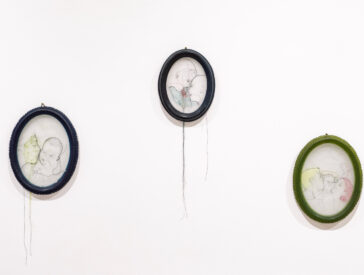

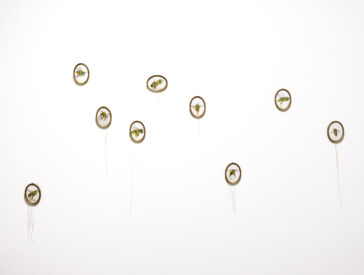


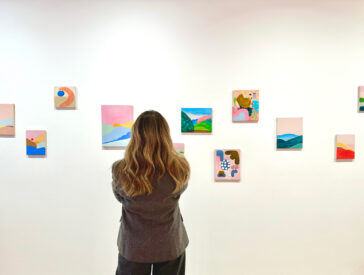
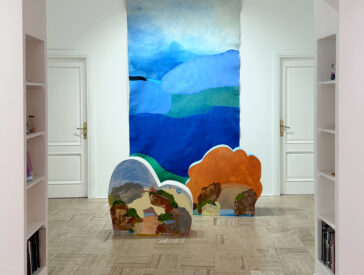
Critical essay
Alice Schivardi
By Giovanna Dalla Chiesa
With the thread of her ’embroidery drawings’ on transparent paper, Alice Schivardi has not only told stories that bring to the forefront the intimacy and focused contemplation of the feminine world, but has also built a bridge between aspects of artistic representation that have traditionally remained abstracted from reality and those deeply rooted in life.
These include not only ethically or spiritually exemplary figures such as the partisan Mario Fiorentini or Saint Rita of Cascia—protagonists of some remarkable performances—but also the entire living world: from extraordinary social insects like bees to other creatures who, regardless of their place in the natural order, deserve respect, even to the point of receiving a proper burial. This extends to the animal kingdom of dogs and birds, with whom the artist achieves a profound sense of identification, as well as to the broader spectrum of human diversity—ethnic, gender-based, or genetic—as reflected in her recent work with the blind.
Alice Schivardi’s thread is, therefore, a thread of thought—immaterial yet persistent—that weaves both severe and gentle stories onto transparent surfaces, allowing it to float in the air. It crosses boundaries, continually forging connections and, when necessary, reshaping the narrative to reunite what human prejudice has divided.
This wise and profound thread, aesthetically enchanting, engages with anthropological, political, social, and religious dimensions—foundations of our human awareness and essential to the possibility and necessity of harmonious coexistence and survival.
Luciana Pretta
By Giovanna Dalla Chiesa
Luciana Pretta was born a painter. Painting is the silent language in which her sensitivity naturally developed, gently curving around obstacles, finding refuge in the richness of emotions and dreams. Her painting makes no distinction between line and color, between drawing (reason) and color (emotion).
The Brazil she comes from—though of Italian origin—with its vast expanse, vibrant colors, ignorance of the passions and conflicts that fuel Greek tragedy, its absence of any rules of perspective, is a realm of spontaneous relationships, where culture favors not representation but song, music, and dance. It is a land where rituals and behaviors emerge in harmony with the natural world (and the human being), honoring both its form and essence. Europe took more than a century to overcome the division that had long plagued its culture, dismantling a Cartesian ego always eager to build barriers at every opportunity.
In recent years, Luciana Pretta’s work has evolved from the small and medium-sized formats she typically used on canvas, along with her ingenious reuse of paper, cardboard, and small objects, to monumental works that emphasize the qualities of landscape painting—a landscape that is always central to her work. Here, nature becomes body, river, and mountain, embracing the viewer within the sinuous flow of its tectonics, inviting them to feel at ease, much like one does beneath the vault of the sky, the canopy of a tree, or the hollow of a rock.
The memory of her homeland’s rugged landscapes is now ever more present, taking shape through an active process of transformation. She incorporates organic and natural materials, such as pigments from minerals and plants, essential oils, and raw cotton. This choice is not merely aesthetic but also ethical, rooted in a commitment to ecological sustainability, environmental responsibility, and a deep reverence for all of creation, of which humankind is only a small part.
Luisa Lanarca
By Giovanna Dalla Chiesa
Weaving is part of the most complex faculty of human thought, tied to a destiny not of separation, but of integration between the paired elements nature has given him—arms, legs, eyes, nostrils, ears, and, above all, the two cerebral hemispheres. This integration creates the conditions for a new being to emerge, a work that, in turn, will gradually shape its own fate.
Luisa Lanarca did not come to weaving later in life, but rather embraced it from the outset, studying under renowned masters such as Laura Marcucci Cambellotti and her Textile Workshop. What makes her journey exceptional is her analytical approach to it on a psychological level, thanks to her studies in Visual Perception and Gestalt, which she pursued at the Luigi Veronesi School in Milan.
Unlike many, weaving has allowed Luisa Lanarca, in her unique journey, to cultivate self-knowledge, aligning with the sharpening of her own identity, while also embarking on a journey into language, where poetry becomes a space of liberation, emotion, and fullness. According to the artist, the intertwining of reason and feeling, of eros and psyche, can only find its resolution in a synthesis of laboriousness that resembles a silent prayer, illuminated by a light that transcends all boundaries—like poetic words, and in particular, those of Emily Dickinson, capable of giving voice to her silence.



